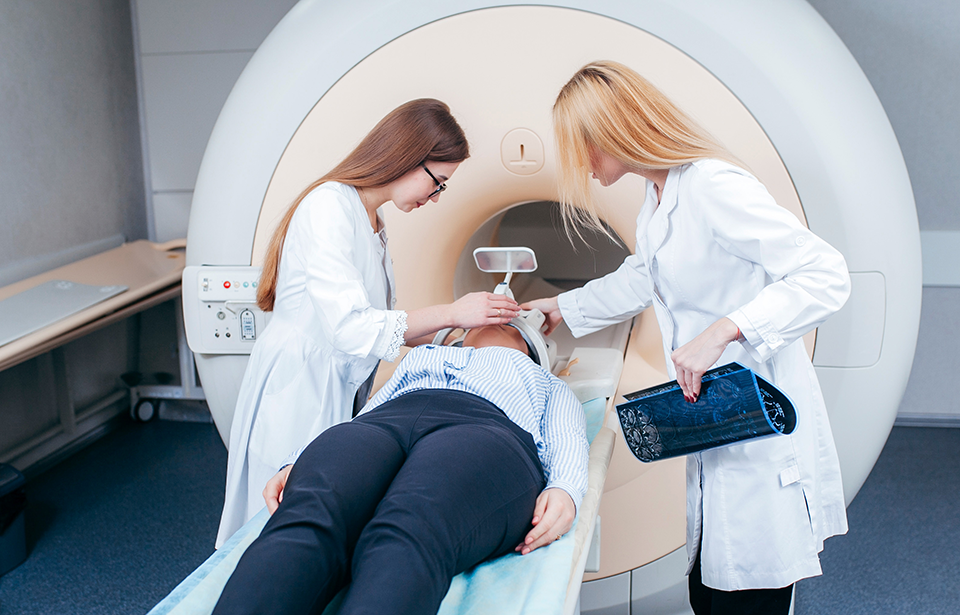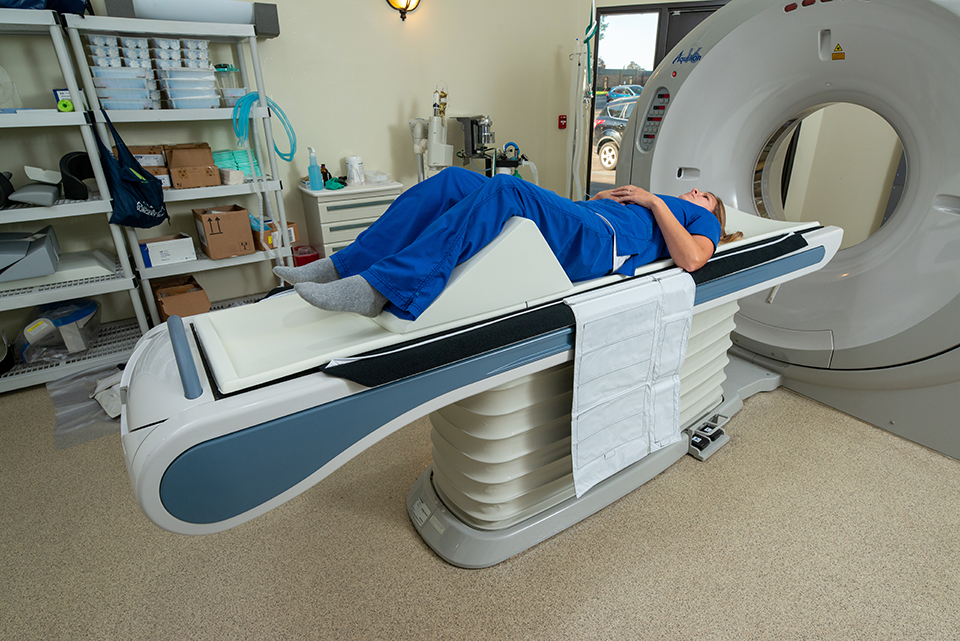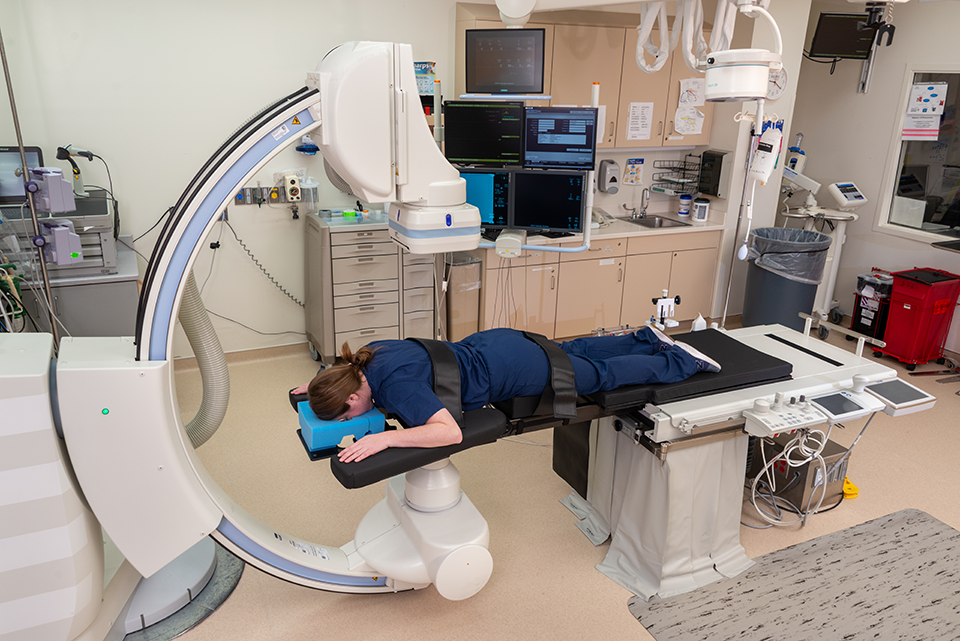Optimizing Imaging Systems for Multiple Procedures, Part 2: Enhanced Patient Experience
This is Part 2 in a 5-part series about optimizing multi-procedure imaging systems. Part 1 offered an overview of the benefits. In Part 2, we’ll...
3 min read
Domico Med-Device June 27, 2023
This is the final installment in a 3-part series on patient positioning factors that improve imaging and therapy success. Part 1 discussed how patient positioning impacts image quality. Part 2 detailed how patient positioning influences comfort and safety. In Part 3, we’ll cover how patient positioning contributes to efficiency and accessibility.
The right approach to patient positioning not only optimizes imaging, it also increases hospital efficiency and accessibility. That drives better therapeutic outcomes for patients and hospitals. Here’s how.
 Procedural Flexibility
Procedural FlexibilityRail extenders with quick-change accessories allow caregivers to quickly switch from minimally invasive to open procedures. Armboards, table extenders, interchangeable tabletops, and other patient positioning aids enable hospitals to use the same operating room or therapy room for multiple types of procedures and image-guided therapies, saving time during and between procedures and increasing hospital efficiency.
For instance, a hospital equipped with versatile positioning aids can seamlessly transition from a laparoscopic procedure to an open surgery without the need to transfer the patient to a different room or table. This not only saves time but also reduces the risk of infection and other complications associated with patient transfers.
The right positioning aids make it easy to image patients without limiting caregiver access. For example, armboards cradle arms so physicians can access veins, ensuring that intravenous lines can be placed and maintained without interference. They also keep patients from accidentally interfering with imaging equipment, which is crucial for obtaining high-quality images.
Additionally, proper patient stabilization can enhance the accuracy of procedures. For example, during a CT scan, ensuring that the patient remains still is paramount to achieving clear images. Proper positioning aids can immobilize the patient adequately without causing discomfort, leading to more precise diagnostics and subsequent treatments.
 Thoughtful Design
Thoughtful DesignSome positioning aids are thoughtfully designed for real-world, practical applications. For example, the Mayfield Adapter for the Philips AD7 neurology tabletop is designed to avoid collisions with C-arms, reducing the potential for equipment damage and increasing procedure efficiency. This thoughtful design helps streamline the workflow, as caregivers can focus on the procedure without worrying about equipment interference.
Moreover, designs that consider the ergonomics of both patients and caregivers can prevent injuries and fatigue. For instance, adjustable height tables and positioning aids that reduce the need for awkward postures can make a significant difference in the daily operations of a hospital, leading to fewer staff injuries and higher job satisfaction.
Positioning aids designed with lightweight materials allow one person to switch accessories, reducing staff's need to prepare operating rooms and therapy spaces. Good design reduces the complexity of positioning, which is a win for patients who want to be comfortable, caregivers who want to work efficiently, and hospitals that want better patient and financial outcomes.
Lightweight yet sturdy materials like carbon fiber are often used in advanced positioning aids. These materials not only provide the necessary support but also make it easier for healthcare providers to maneuver and adjust the aids. This simplicity can significantly cut down the preparation time for procedures, allowing hospitals to treat more patients in a day.
Durable positioning aids mean lower replacement rates, increasing the lifetime value of each product – and speeding up and simplifying audits. For example, certain brands of fabrics have special features such as polyurethane coatings that resist chemicals and have been proven to lead to a tenfold reduction in failure rate.
When positioning aids are built to last, hospitals save money on replacements and repairs. This cost-effectiveness extends to maintenance as well. Durable aids require less frequent inspections and upkeep, allowing hospital staff to focus more on patient care rather than equipment management.
 Enhancing Workflow Efficiency
Enhancing Workflow EfficiencyEfficient patient positioning is directly tied to improved workflow within medical facilities. When positioning aids are easy to use and adjust, the time required to prepare for a procedure is minimized. This efficiency allows for quicker turnover between procedures, enabling more patients to be treated in less time.
For example, in a busy radiology department, having tables and pads that are easy to clean and adjust can significantly reduce the time between patient appointments. This not only enhances patient throughput but also reduces waiting times, thereby improving overall patient satisfaction.
Patient positioning aids must cater to a diverse patient population, including those with disabilities or special needs. Adjustable and versatile positioning devices can accommodate different body types and medical conditions, ensuring that all patients receive the best possible care.
For instance, bariatric positioning aids are designed to support patients with higher body weights safely and comfortably. Pediatric positioning aids, on the other hand, are tailored to the unique needs of children, ensuring that they are positioned securely and comfortably during procedures.
Proper training on the use of positioning aids is essential for maximizing their benefits. Hospitals should implement comprehensive training programs to ensure that all staff members are proficient in using these devices. Additionally, having clear protocols and guidelines can help standardize the positioning process, leading to more consistent and reliable outcomes.
Regular training sessions and updates on new positioning technologies can keep the staff informed and skilled. This continuous education helps maintain high standards of care and ensures that the latest advancements in patient positioning are effectively integrated into practice.
Whether outfitting a new operating or therapy room or reimagining an existing space, considering patient positioning during the planning phase can help you identify solutions that enhance patient comfort, improve image quality, and yield better therapeutic outcomes. Investing in high-quality, durable positioning aids designed with both patients and caregivers in mind is crucial for achieving these goals.
By prioritizing efficiency and accessibility in patient positioning, hospitals can enhance their operational capabilities, provide better patient care, and ultimately achieve better therapeutic outcomes. As medical technology continues to advance, staying abreast of the latest developments in patient positioning aids will be key to maintaining a competitive edge and delivering the highest standards of healthcare.

This is Part 2 in a 5-part series about optimizing multi-procedure imaging systems. Part 1 offered an overview of the benefits. In Part 2, we’ll...

This is Part 2 of a 3-part series on patient positioning factors that improve imaging and therapy success. Part 1discussed how patient positioning...

Patient positioning is crucial to therapy success because it directly impacts image quality, patient experiences, and caregiver efficiency. The right...